Registrations
We now manually approve all new user accounts due to a large influx of spam bots. Accounts are normally approved within 48 hours.
If you need any help with using this Wiki, please ask here: TalkFord.com Wiki Submission Forum
MAF (Mass Air Flow) Sensor Clean 130 TDCI
Contents
MAF (Mass Air Flow) Sensor Clean - 2004 130 TDCi Euro 4
Disclaimer
Disclaimer: As we live in a litigious world I have to make it clear that no guarantee or warranties are expressed or implied, you follow this guide entirely at your own risk. If you, your car, or any 3rd party is damaged as a consequence of following this guide that is not my responsibility. Hope that is clear!
Introduction
MAF (Mass Air Flow sensor) relays information to the ECU/PCM regarding the amount of air that is being drawn into the engine. With this information, the PCM varies the fuel needed to keep the car running as it should.
Certainly on earlier fords (not sure about the Mk3 Mondeo - but most likely!), the information from the MAF also had an influence on the automatic gearbox and its function.
The Mondeo uses a 'hot wire' MAF sensor - basically, a wire is heated to a set temperature, and the MAF electronics measures the electrical current needed to maintain that temperature... so, the more air going through, the more there is a cooling effect on the wire thus the more electrical power is needed to maintain the wire at its temperature...
Although the MAF is located on the 'clean' side of the air filter pipework, microscopic particles will get drawn through the air filter into the inlet tract of the engine, over time there will be a build up of particles that have burnt onto the MAF hot wire. This leads to a condition where more electrical current is needed to heat the wire in the first place, but this is due to the muck burnt onto the wire and not because of increased airflow, thus inaccurate information is sent to the PCM.
When the MAF gets dirty, it will be sending inaccurate information to the PCM, leading to driveability issues. (hesitation.. poor 'pick up', etc)
Note that a dirty MAF wont usually generate a 'Engine Management' light on the dashboard, as the readings a dirty MAF is relaying to the PCM arent out of its operating range... it is just inacurate readings.
As my car was experiencing some low revs drivablilty issues, I decided to clean out the MAF sensor.
The photo sequence that follows shows the work involved on a 2004 Ford Mondeo 130 TDCi ‘Euro4’, though I am sure other models will be similar.
The text and photos were done by Dave Yardy (daveyardy@hotmail.com) and this is the 'version 1'. The pictures are quite big currently... but will resize them at some point in the future...
Parts and Tools Needed
The work involved is simple and should well be in the capabilities of the home mechanic, the car doesn’t need to be lifted and the work is all done at the front of the car.
You need a T20 Torx srewdriver to remove the two screws that hold the MAF in the inlet duct.
A handful of cotton buds.
Paper Towel
Some Electrical Contact cleaner / Carburettor Cleaner / Isopropyl alcohol.
Locating and removing the MAF
Disconnecting the MAF will generate a Fault code/trigger a EMF light, so before starting.. its worth ensuring that the ignition is 'off', You may wish to disconnect the battery.
The sensor is located on the top of the air inlet trunking... just infront of the brake fluid reservoir
This picture shows the MAF sensor that is to be removed (inside the red box):
- Unplug the electrical connector
- Undo the two torx headedscrews holding the sensor into the duct.
- Pull the sensor up and take it to the workbench..
- Note that the sensor is *very delicate* dont drop it! - New ones are circa £100!
And looking into the valve you will more than likely find a hefty build up of carbon crud:
Manifold side:
Air inlet side:
Working on a piece of newspaper, and using a suitable screwdriver, carefully clear out this carbon without gouging the inside of the valve.
The majority of the build up will come out this way:
Once the majority is cleared out, it’s time to use the ‘Carb Cleaner’ spray and paper towel to start clearing the rest out, this is where things get messy. The use of a thin brass brush, small screwdriver and the scotchbrite pad will help to get the really stuck on bits of carbon moving. The aim is to get everything inside the valve back to shiny alloy and the gasket surfaces spotless:
Comparing the before and after pictures of the EGR - it obvious to see that the carbon was making a substantial restriction to the air flow for the engine.
At this stage I used a Mityvac pump to check and ‘exercise’ the valve. This is connected to the small vacuum port on the valve (the one adjacent to the electrical connection on the end of the valve).
This valve seems to operate fine: It opened up when there was around 15 inHg of vacuum.
Removing and Cleaning the Inlet Manifold
With the EGR valve now spotless, it could be refitted. However considering how choked up the valve was I decided to remove the inlet manifold and give that a clear out. Again, this is straightforward with no nasty surprises, currently the engine bay looks like this:
The diesel fuel pipes need to be unclipped from their support but not disconnected, the supports are on the left hand side of the engine (as you look at the engine from the front), there are bits of wiring that need to be unclipped from the manifold on the right hand side, the vacuum solenoid complete with its mounting needs to be removed from where it bolts onto the manifold and moved to one side, as does the grey electrical connection just above the manifold but below the fuel rail.
Undo the 9 bolts around the periphery that secure the manifold to the cylinder head. The bolts on this manifold are captive so shouldn’t fall out. Once the manifold is loose it can be removed carefully to the right, and clearing the fuel lines. Note that there are 8 rubber sealing gaskets used between the manifold and the cylinder head, although these are a snug fit in the manifold: be careful that these don’t fall out whilst removing the manifold. Once the manifold is clear of the engine, remove the rubber gasket seals and keep them in order for reuse.
As expected, the inside of the manifold was also choked up with carbon deposits:
Access inside the manifold is far more difficult compared to the EGR valve, however good results can be had with the wire brush and screwdriver poking into the various ports to scrape away and loosen as much as possible:
More ‘carb cleaner’ spray and paper towel is used to clean up the manifold, both inside and out. The gasket recesses need to be cleaned out too, as well as all the rubber gasket seals, though I didn't use any solvents on the rubber gaskets.
The cleaned up manifold, again a massive difference to how it was when removed:
Refit the cleaned up rubber gasket seals and the manifold is ready to be refitted:
Reassembly and Finishing off
Before refitting the manifold and EGR back onto the car, there's a few additional things to do and check:
Attention needs to be turned to the cylinder head. Here, the gasket surface needs to be carefully cleaned (carb cleaner, scotchbrite pad) ensure that the surface isn’t deeply scratched – it is alloy and is easily damaged.
Any carbon build up in the cylinder head ports can be carefully removed. Care is needed here to ensure the carbon comes out of the engine and not pushed in.
It is worth giving the rubber air intake hose a thorough check to ensure that there are no splits or tears as this will give a dramatic performance loss, 'whooshing' noises and increased smoke. It’s easier to do this check now as there is a bit more space.
- The metal gasket (that goes between the EGR pipe and the EGR valve) needs to be cleaned, as does the end of the EGR pipe (scotchbrite pad)
- Clean up the rubber gasket seal that goes between the EGR valve and the inlet manifold.
- Reassembly, as they say, is the reverse of the disassembly...
- Manoeuvre the manifold into place (from the right hand side) ensuring that the rubber gasket seals aren’t dislodged and tighten the 9 bolts to a torque of 18Nm.
- Tighten these progressively starting in the middle and working outward to ensure no twist on the manifold.
- Refit the vacuum solenoid and its mounting bracket to the manifold, connect up the grey electrical plug and clip the necessary wiring and fuel line supports back into place.
- Refit the EGR valve, don’t forget the cleaned up gaskets (the circular rubber gasket between the inlet manifold and the valve, and the diamond shaped metal gasket between the valve and the EGR pipe.
- Check that the air intake pipe is pushed firmly into place and tighten with the hose clip.
- Reconnect the wiring plug to the EGR valve, and the vacuum pipe.
- Double check that all is connected up, tightened up and nothing is out of place:
Before refitting the engine cover, it may be prudent to do a road test to ensure all is secure and no air leaks. It may take the Engine Management 100 miles or so to adjust to the sudden increase in air being delivered to the engine. Mine was a little 'grumpy' for a while but certainly got better under 100 miles.
--Icklemini 00:20, 28 March 2009 (UTC)

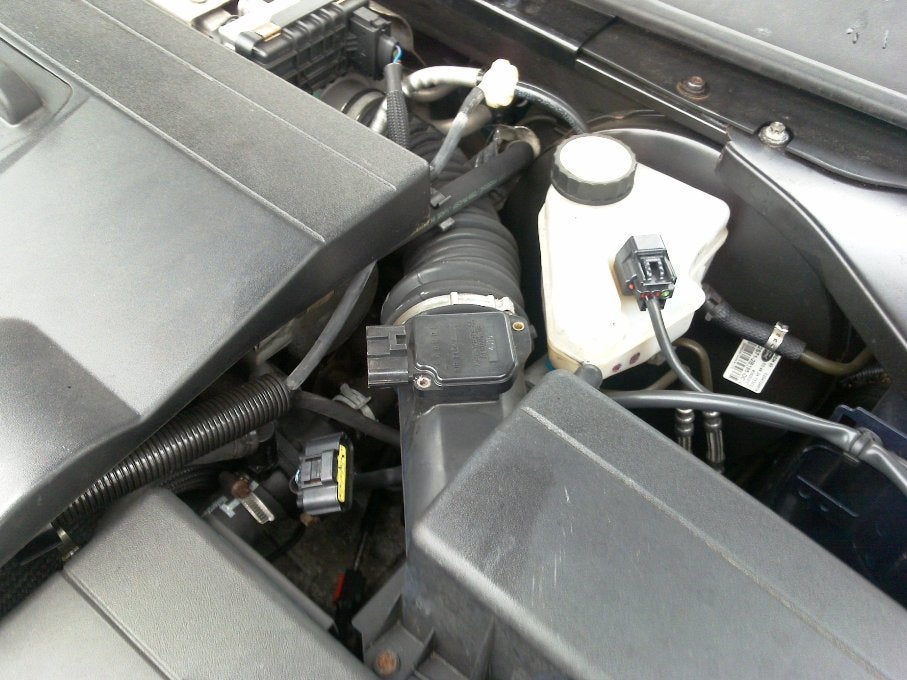
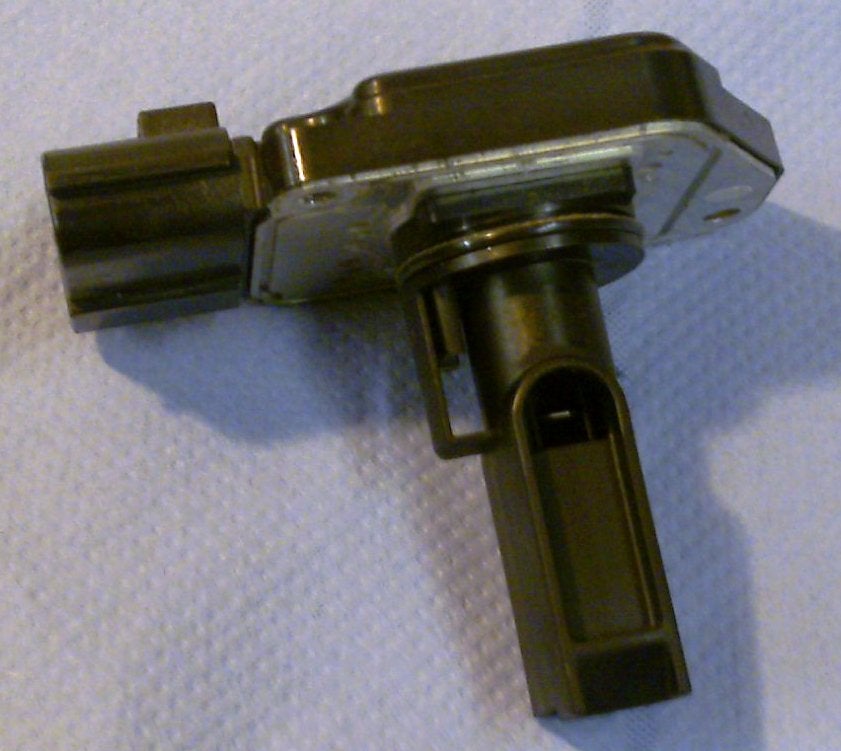

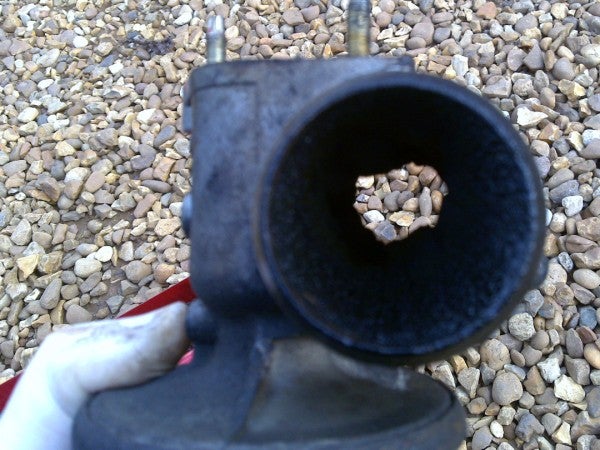



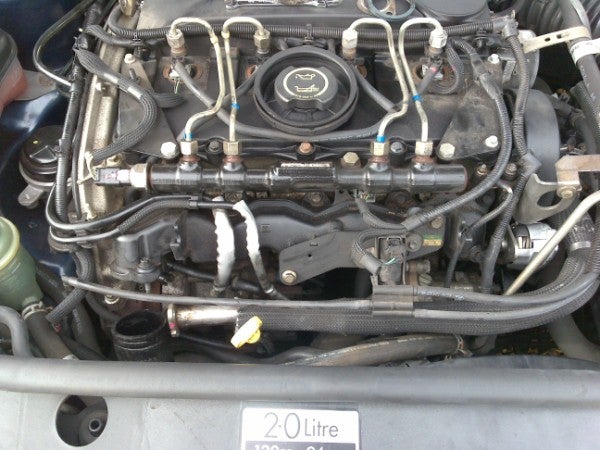
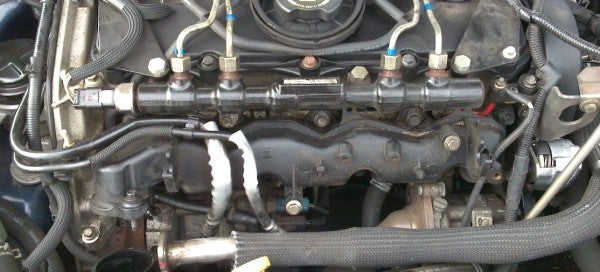
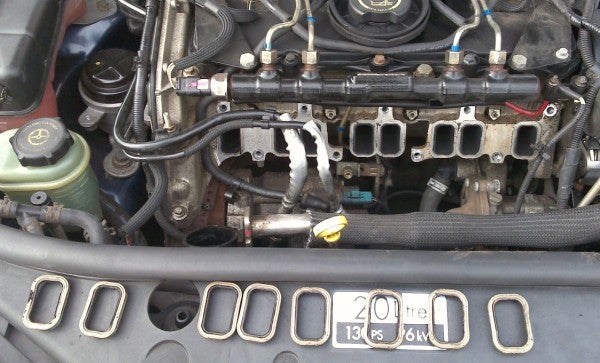
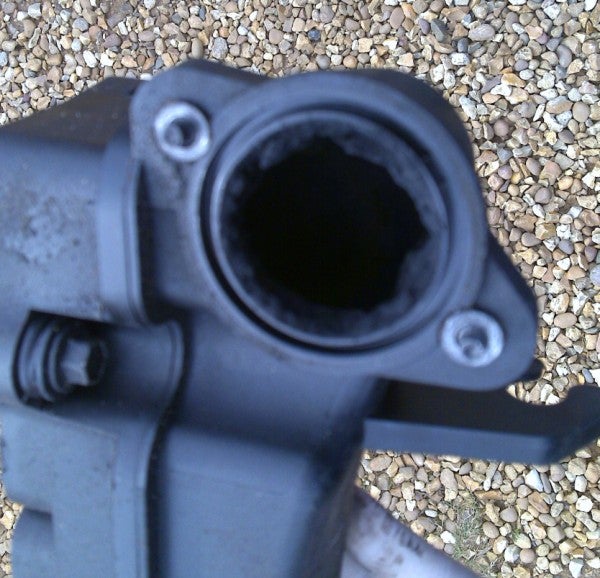
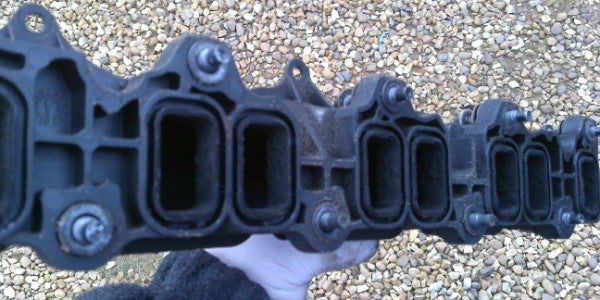

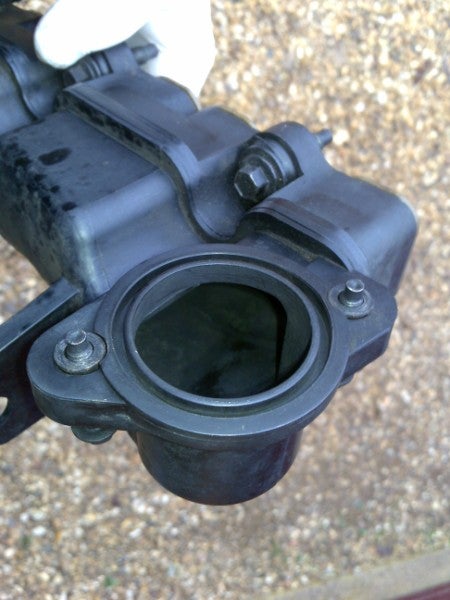
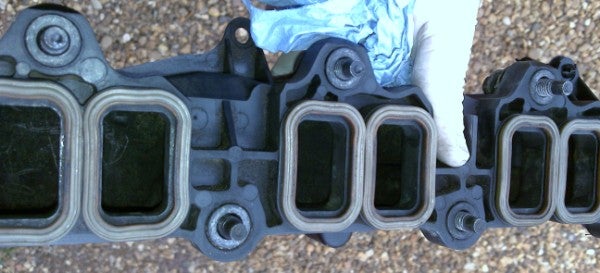
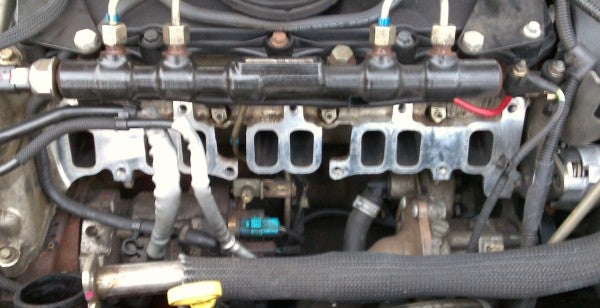

 Your Privacy Choices
Your Privacy Choices